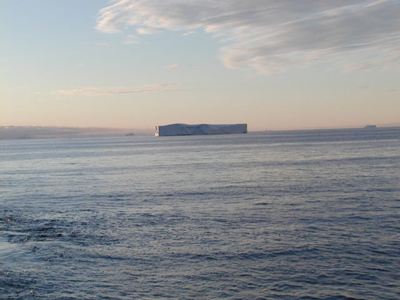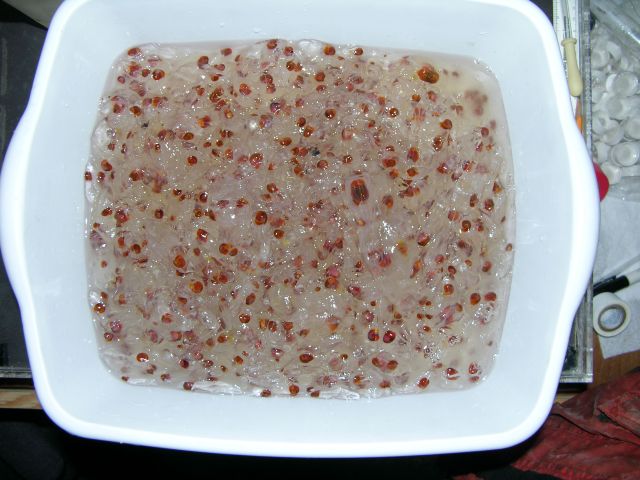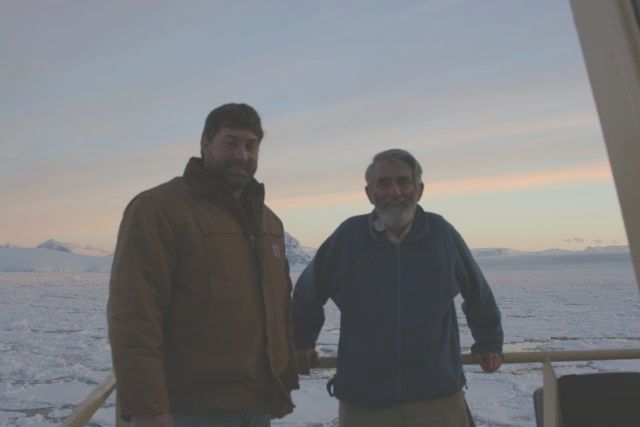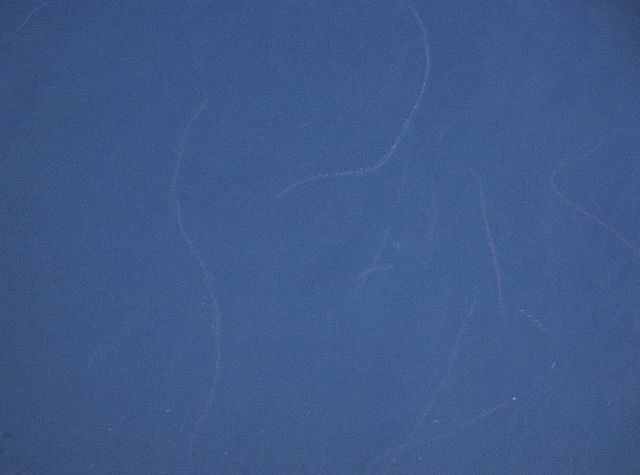Compass Heading: 66°
| • Home |
| • Questions |
| • Participants |
| • Background Information |
Back up a bit. We didn’t pick up Mike at Shirreff until this date…
We are steaming off Hoseason Island at midnight, and the half moon is shining above the snowcapped peak before us. The sky is still pretty well lit

| 1 | 2 | 3 | 4 | 5 | 6 | |
| 7 | 8 | 9 | 10 | 11 | 12 | 13 |
| 14 | 15 | 16 | 17 | 18 | 19 | 20 |
| 21 | 22 | 23 | 24 | 25 | 26 | 27 |
| 28 | 29 | 30 |
| 1 | 2 | 3 | 4 | |||
| 5 | 6 | 7 | 8 | 9 | 10 | 11 |
| 12 | 13 | 14 | 15 | 16 | 17 | 18 |
| 19 | 20 | 21 | 22 | 23 | 24 | 25 |
| 26 | 27 | 28 | 29 | 30 | 31 |
(like late dusk at home), but it is evident that we are seeing more northern skies – we actually have a bit of a ‘dark night’ now. I didn’t expect to be so surprised to see the difference, and I’m finding that I’m feeling a bit melancholy about it. This also surprises me…. come on, it’s Christmas time!! I realize now that we didn’t see the moon while in the Antarctic, nor any stars, maybe because the sky was too light all the time. Joe Pettit from Palmer Station says they saw the moon all the time when there was a clear sky (and that in Antarctic Winter, moonshine sometimes makes more light than they see in the day). Perhaps I just wasn’t paying attention to looking for the moon, we were so focused on watching the sunsets and sunrises between midnight and 3 a.m.!
The ocean is calm as we pass Snow Island to the south and steam along the west end of Livington Island. Our borders include Rugged Island off to the far west, and Byers Peninsula. Our plan is to head around to Cape Shirreff along the northern shore of Livingston, to pick up another US-bound traveler. It’s a regular Greyhound Bus shuttle, this ship!
I see nothing to the north, west and south, except one huge iceberg in the distance. It is long and flat and looks quite uniform from here, though I now know they each have unique character. This may be my last iceberg… (Melancholy? I’m getting downright morose!!) [See Image 1]
Our first plankton tow in the Drake was near Fortin Rock at Cape Shirreff, on our way out. Salps, salps, and more salps!!! The cod end (little filter catcher at the end of the net where our plankton is usually trapped, and we rinse it to fill a large bowl for sampling) was overflowing and the catch volume expanded well into the net with salps. Looking over the side, we could see them, attached in long aggregate chains, doing their S-curved dance in the briny blue. Hundreds of chains just at the surface, and this expanded probably for miles, and who knows how deep?! Well, the Salp Team was happy (“..just when you think it’s safe to pack up your lab and get a good night’s sleep….”) and blew out of their bunks like jackrabbits. And although I don’t have a photo of it, I think this Load ‘o Salp will be considered the Catch of the Day [See Image 2, similar load].
Science Team of Dr. Ken Halanych and Dr. Rudolf Schletema [See Image 3]
The early thinkers on the possibility of benthic larvae being transported across large open ocean currents were at odds as to whether this was possible. Many didn’t believe that animals in the larval stage had enough time to travel much of a distance before their need to metamorphose into adults. However, in 1968 Dr. Scheltema published an article inNature that described larvae of a number of benthic invertebrate species and presented evidence that larvae could be dispersed in both directions between the eastern and western Atlantic. Since then it has been established in the laboratory that some benthic animals found in the open ocean and held in the laboratory have larvae with a very long development (in one instance more than a year) and can delay their metamorphosis in the absence of a suitable environmental cue. Dr. Scheltema’s course of study then followed this theme, leading to many cruises and many more papers, and ultimately (up to now, anyway) this cruise with Ken Halanych.
I’ll give a short history on the genesis of this collaboration. Rudi Scheltema and Izzy Williams went on their first cruise to Antarctica in 1994 on another scientist’s research. As a result of this, Rudi applied for and won a grant called a “Small Grant Exploratory Research” so he could come back and continue larval studies on his own in 2001 and 2002. Ken Halanych, a new scientist at the Woods Hole Oceanographic Institution, joined Rudi to assist on this trip. He went back to the Antarctic with Rudi in 2002, this time performing a few ‘benthic grabs’ to look at certain things regarding his own scientific interests. Working together on these two cruises led to the submission of a collaborative research grant through the National Science Foundation (NSF), which they won, and that grant is funding this first of two Antarctic cruises to combine the larval and benthic interests.
Dr. Scheltema’s interest for this project involves studying the way larvae are transported across the Drake Passage, possibly maintaining a connection with species of certain ocean bottom invertebrates believed separated by the currents of the Drake’s waters when the continents separated about 35 million years ago. On this cruise, we took plankton samples in the Drake Passage (including both sides of the prevailing west-east current) to see if we could find larvae that may explain such a connection, and thesimilarity among certain invertebrate groups between the two continental waters. Of special interest are the larvae of polychaete worms (what I saw as worms with legs) and those of echinoderms (brittle stars, sea urchins, etc.)
The research of Ken Halanych attempts to determine a genetic similarity (through DNA testing) that could support an exchange and genetic connection between these animals in Antarctica and South America. The research on dispersal by Scheltema and genetic similarity or differences made by Halanych may make a contributionto the biogeography and evolution of the Antarctic and SouthAmerica. To do this, the benthic samples will be transported back to the lab at Auburn University, to have their DNA analyzed. Dr. Scheltema’s plankton samples will also be identified via DNA analysis, and the two groups may then be matched and some important conclusions drawn.
An important aspect of this whole study is that using DNA to connect larvae to adults has not been done before to this extent in Antarctica and the Southern Ocean. Another aspect that particularly interested NSF is the interplay between the use of ‘traditional’ and ‘more recent’ techniques – that of plankton net and benthic trawl sampling, followed by genetic (DNA) analysis tools. In the case of this study, the two techniques complement each other nicely.
In addition to what is described above, studies were also made on the occurrence of planktonic larvae of benthic invertebrates in the Bransfield Straits, the vicinity of the South Shetland Islands, the Adelaide Islands andsouthward all the way to the Antarctic Circle (66º 33') .

Photo3

Photo4

One more day of active Journal information, the Salps Lab Scientists, and we will be getting close to port. Man, what a ride!!
Dinner Menu (shipboard, 12/18): | |
tbd |